A B2B website strategy isn’t about publishing a bunch of blog posts every month along with a service page. It is about creating a user experience for visitors, allowing them to explore your brand and services seamlessly.
But B2B websites often fail to engage not only random visitors but also well-targeted personas. Why?
It happens when three crucial elements for building a B2B website are ignored, which are design, SEO, and messaging. These three elements, when combined with a B2B website strategy, ensure delivery of a proper buyer’s journey to the visitors and high-value leads to you.
But how to get started?
Always with the basics.

A B2B website is a platform designed for companies that sell products and services to other businesses. Unlike B2C sites, which often have an “add to cart” option and brief product pages, B2B websites focus on generating leads that are then persuaded by the sales team to become paying customers.
Because of the complex target market, B2B sites feature a professional layout, focusing more on building trust, communicating value, and guiding prospects through the decision-making process.
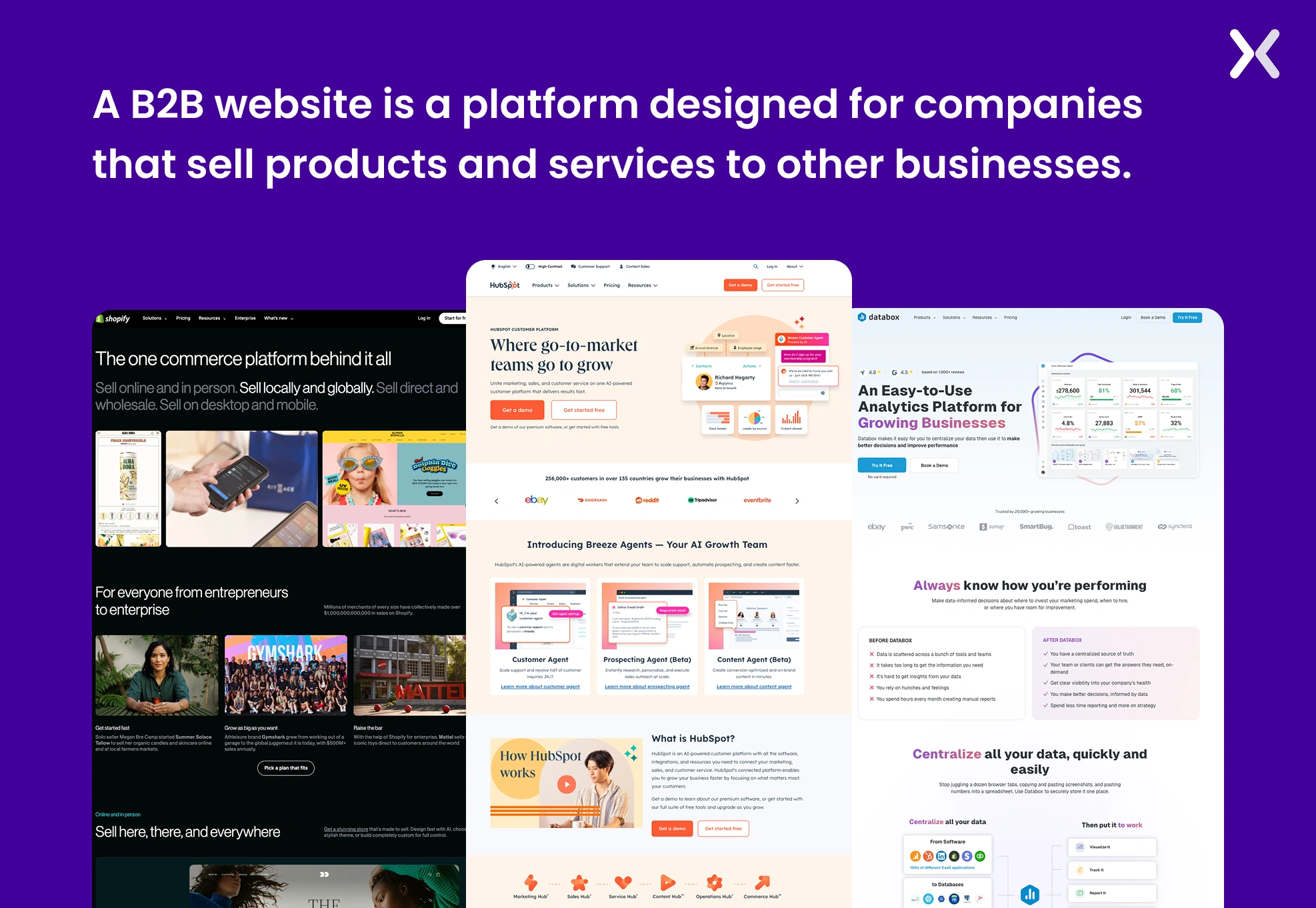
A B2B website strategy leverages your website and positions it according to specific objectives you have set for your business. It enforces a balanced approach towards design, messaging, and SEO to make your brand visible, trustworthy, and worth checking out.
Having a B2B website strategy pushes your website from just being a platform to a valuable touchpoint for prospects to convert into leads.
A good B2B website features an intuitive and user-friendly navigation system. To have such a website, the content, visuals, and user interface need to be built with an intense focus on the target audience.
And that’s why you need a B2B website strategy.
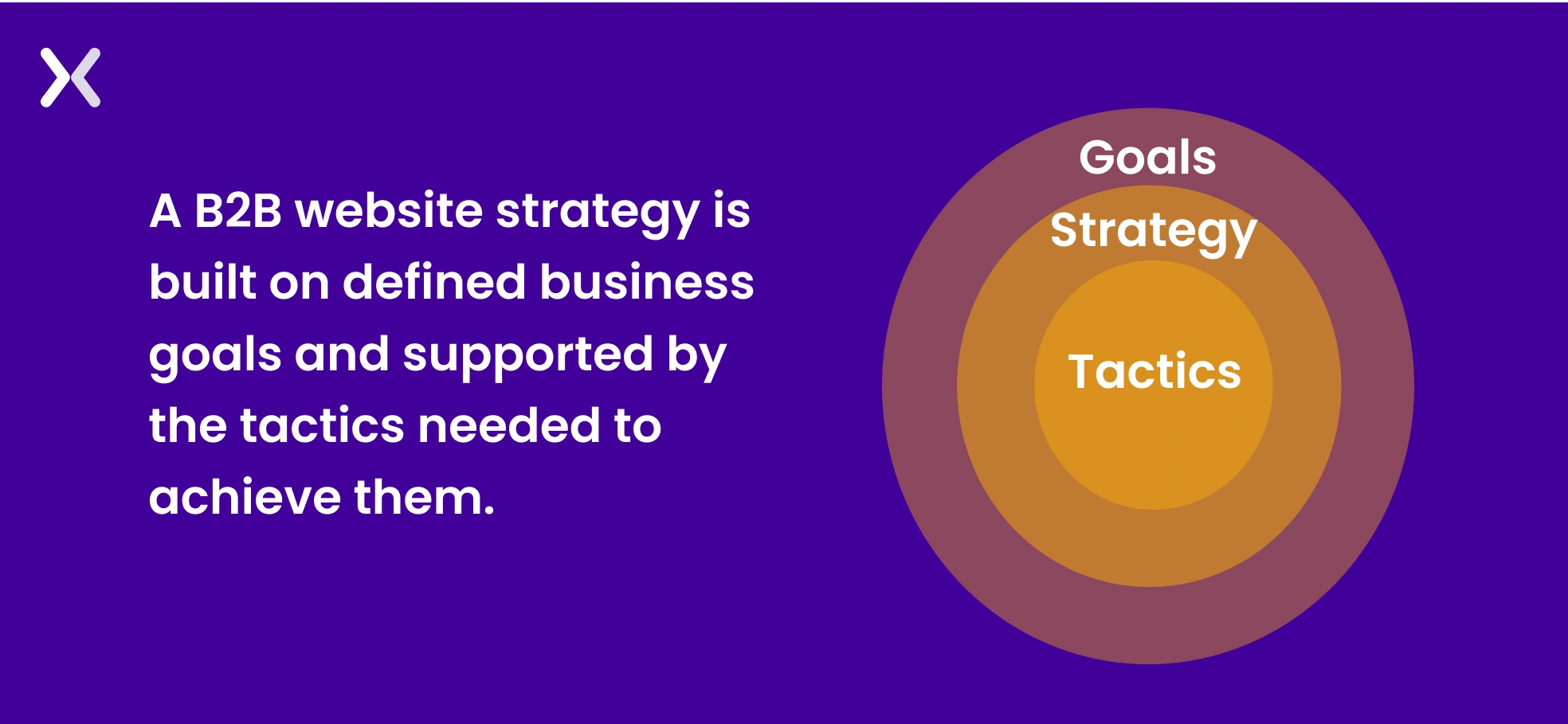
A B2B website strategy is built right after you have finalized the primary objectives of your website, whether it is higher brand awareness, more demo bookings, or free trial sign-ups.
Once these goals are set, the B2B website strategy is shaped around your brand and objectives. It can differ from business to business, but the framework of building a website strategy remains the same for most businesses. Once you have your strategy, it is time to implement various tactics.
Let’s understand this with the example of HubSpot:
Objective: Generate more free trial sign-ups and product-qualified leads for their CRM and marketing automation tools.
Strategy: Position the website as a self-serve sales funnel by educating visitors, demonstrating value, and offering frictionless sign-up pathways.
Tactics: Blog posts, lead magnets such as guides, templates, etc., interactive tools, SEO optimization.
The key difference between B2C and B2B website strategies lies in their goals and buying journeys. While B2B optimizes websites for long sales cycles and multi-level decision-making, B2C sites focus on quick checkouts and emotional appeal.
B2B strategies are built around communicating value through authentic information that gains trust and establishes the brand as a leader in the targeted industry. B2B, on the other hand, has strategies that emotionally engage the audience into immediate action.
Below is a table that makes the difference between B2C and B2B website strategy easier to understand:
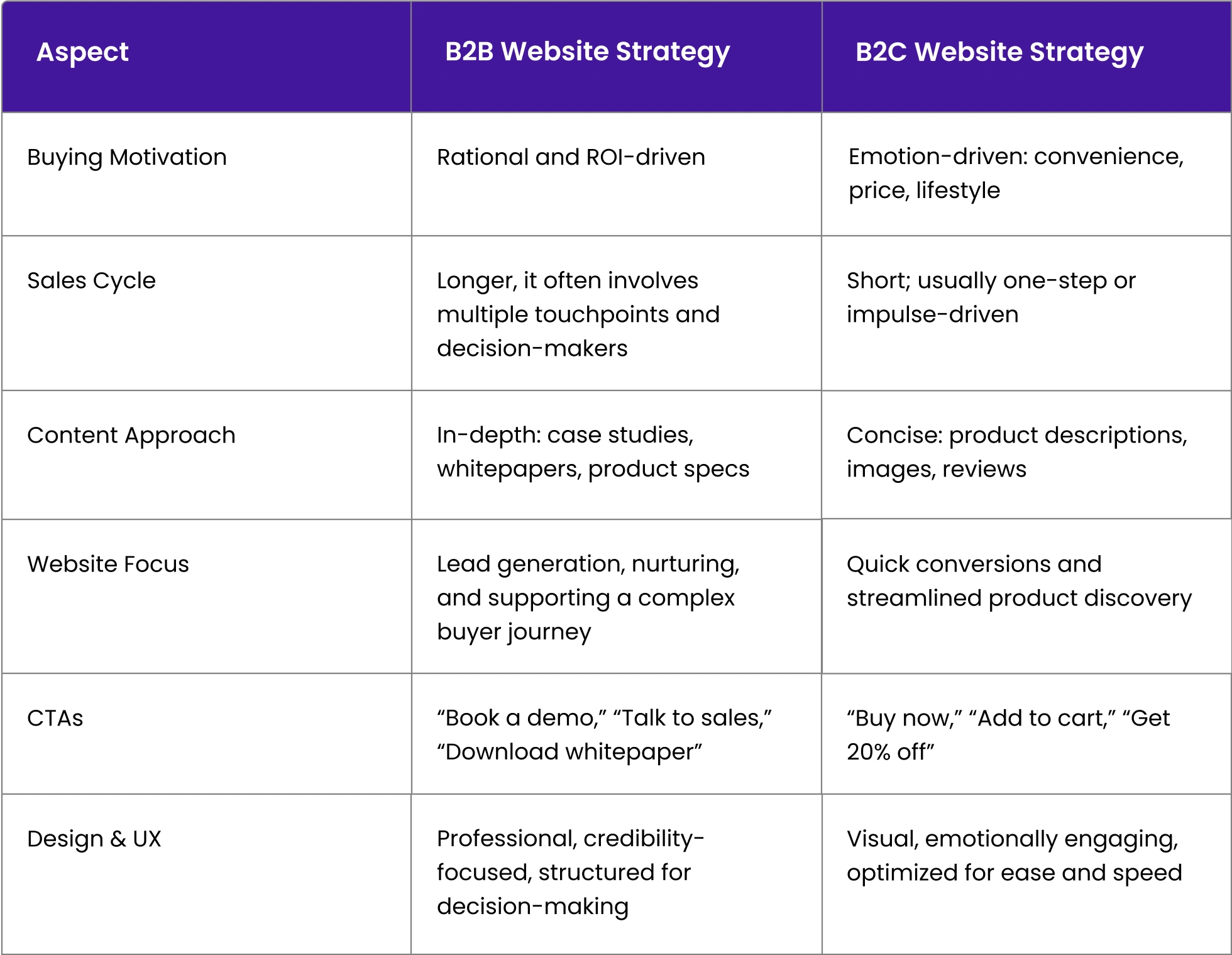
Below are three essential components to always keep in mind while building a B2B website strategy:
B2B buyers are logical, research-driven, data-savvy, and often need to justify their decisions to others. Your website can get visited by the same business multiple times. In this case, your messaging should not be generic, but completely focused on your target audience.
Dedicated sections talking about your consumers’ specific pain points and communicating how your services help them with each one help signal how well you understand your audience and their needs.
As websites are usually the first touchpoint in any buyer’s journey, you must share how your products drive ROI and solve a key problem. The goal here is to strongly position your B2B services as a credible and relevant solution to a specific business problem.
For example, Flare is a cybersecurity SaaS tool. Their industry is already complicated enough, filled with jargon. But their homepage makes it easier to understand with a small animation and a lot of social proof, which is further complemented by another group of pages under the “learn” section.
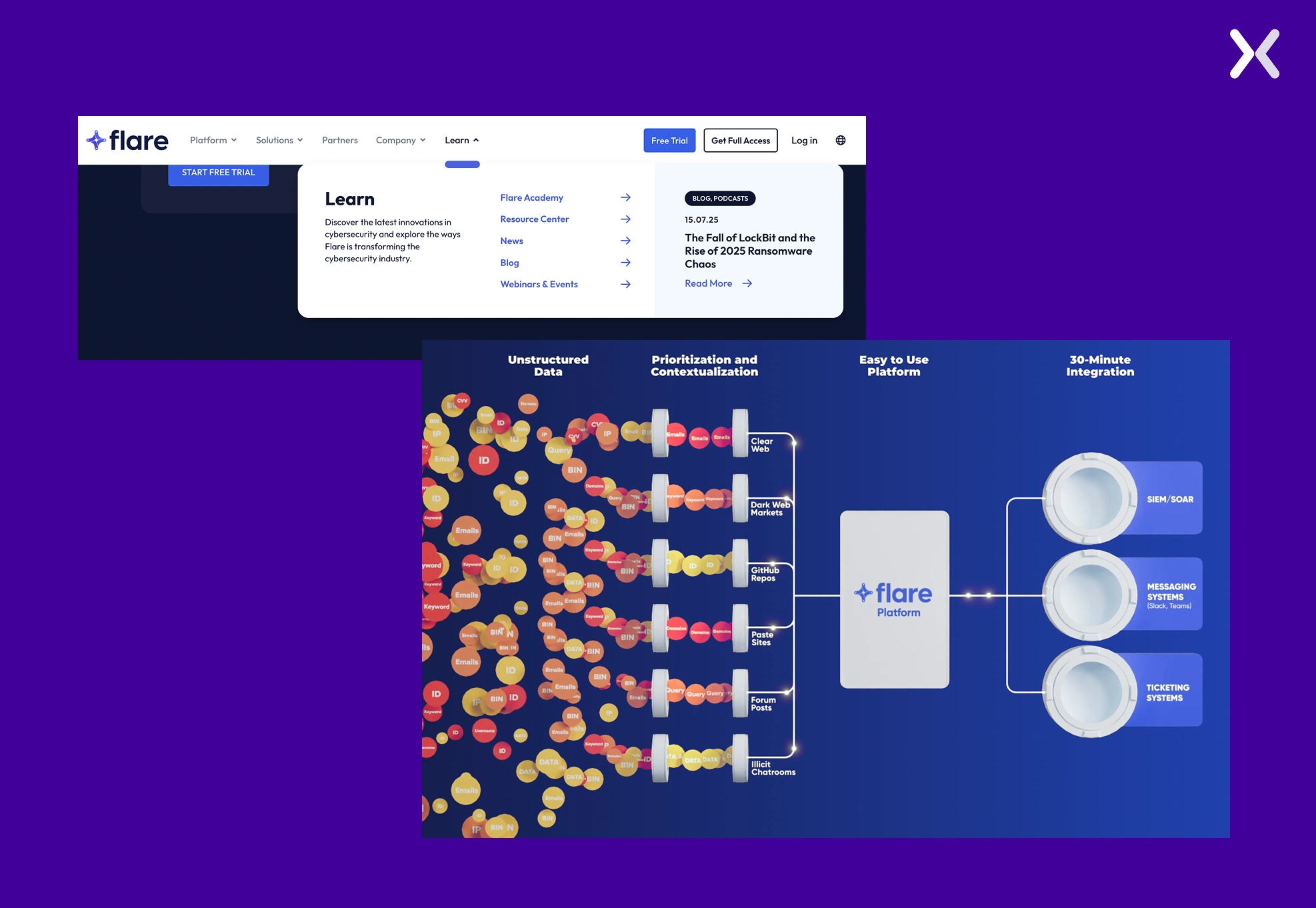
Sales and marketing teams have the most insights into consumers and target audience behaviors. Be it certain questions being asked repeatedly on sales calls or the right outreach and follow-up timings in a targeted sector, the sales and marketing team are often the first to know.
A strong B2B website strategy bridges the gap between marketing and sales to ensure these insights are put to use. It helps your B2B website not only attract leads but also qualify them and create microconversions throughout their buying journey, which increases the chances of final website conversion.
With aligned KPIs, MQL and SQL criteria, and collaborative messaging that supports every stage of the funnel, sales and marketing can turn your website into an asset.
A B2B website strategy is not built in a day. It’s an ongoing process that improves as more insights come from traffic. It’s essential to understand website optimization and how to apply it to your site to reach all audience segments.
Instead of chasing the latest trends, focus on understanding how visitor behavior changes to ensure steady growth in conversions. Using heatmaps and session recordings makes it easier to track visitor actions and keep your website aligned with your audience’s needs.
Instead of building a one big B2B website strategy, we prefer to break it down into three segments: design, messaging, and SEO. Let’s understand what to build in each of these segments in steps.
Begin by identifying what your website needs to achieve. Is the goal to generate qualified leads, increase demo bookings, support account-based marketing, or improve customer onboarding?
These goals will guide every aspect of your strategy, like design, messaging, analytics, and KPIs. If you want to go a step further and have clarity in your website goals, be more specific and make it measurable.
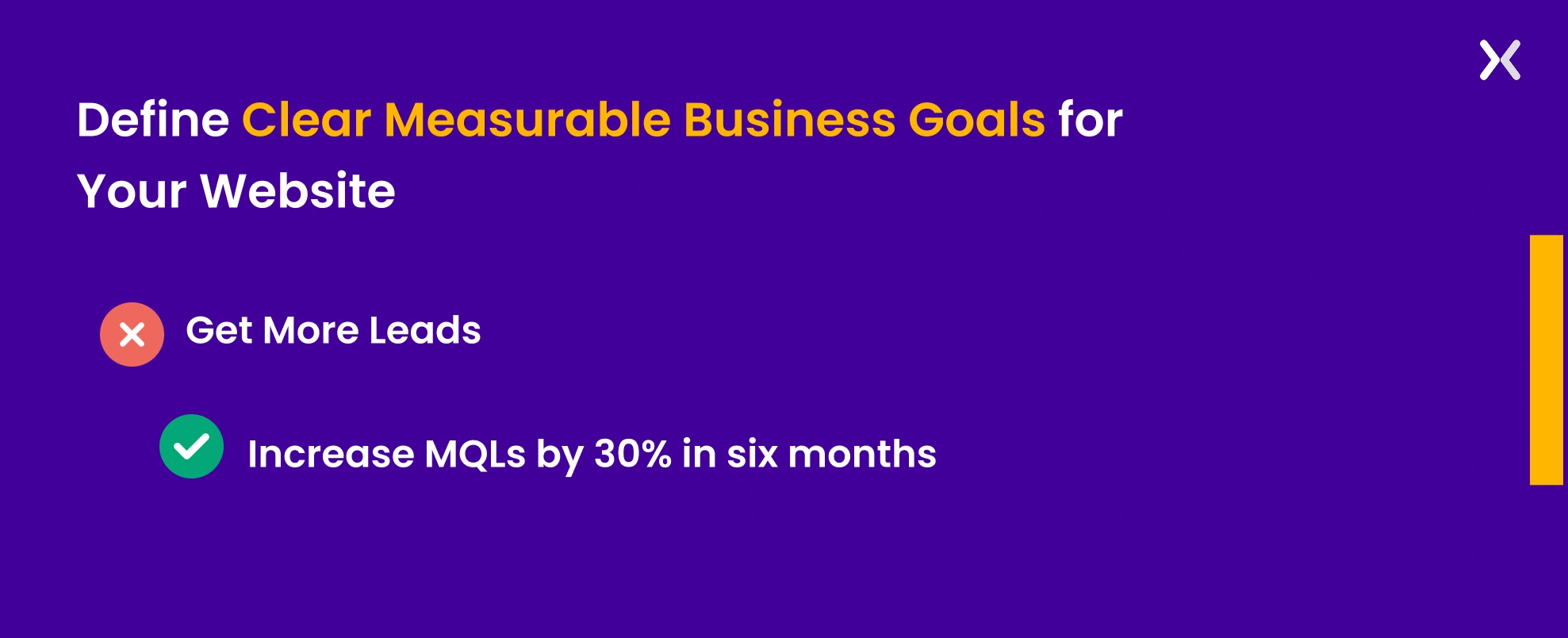
Define your buyer personas, starting with their pain points, job roles, and buying triggers.
The better you understand your target audience, the more effective your content, UX, and messaging will be. Use data from CRM, sales conversations, and customer interviews to validate your assumptions.
This GPT can help you get started: Buyer Persona Generator
B2B purchases are complex and often involve multiple stakeholders. Map out the stages your buyers go through: awareness, consideration, and decision, and align content, CTAs, and UX elements accordingly.
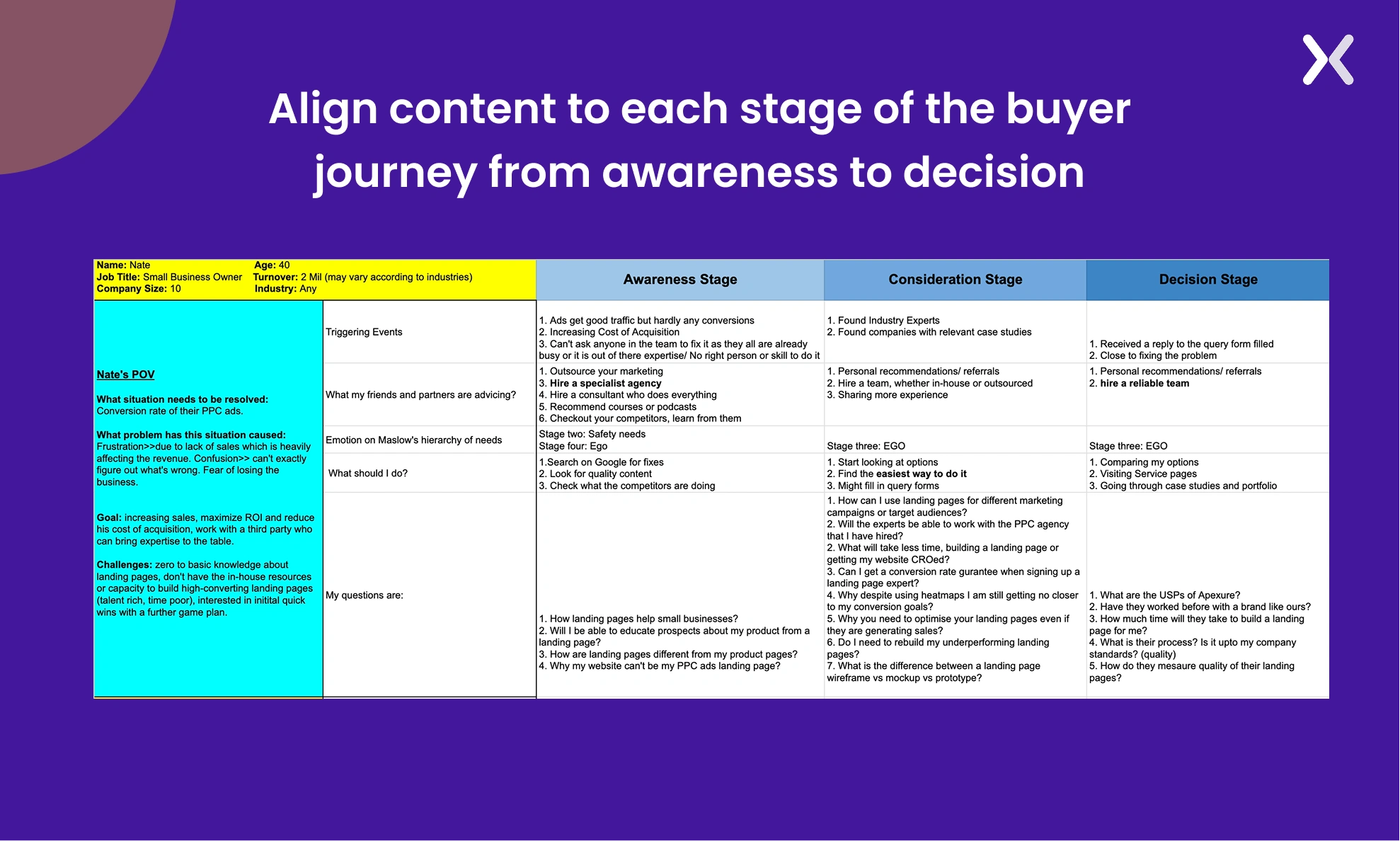
For example, a top-of-funnel visitor may need educational content, while a decision-stage visitor needs comparison pages, case studies, or direct contact with sales. A dedicated content hub to cater to both segments is crucial, be it through blog posts, webinars, llead magnets, or masterclasses.

Creating a smooth user interface (UI) and user experience (UX) is not limited only to apps but also expands to websites. Intuitive design delivers visuals that signal users toward conversions without them feeling pushed or overwhelmed.
Your sitemap and user flow should support your B2B website strategy, not just look good. Proper UI/UX design allows you to group content logically, prioritize key conversion paths, and ensure that information is easy to find.
Here are some things to get you started.
Create a mindmap of your website that showcases what type of pages you want to have to get clarity on what’s important and what’s not. It will help you roughly understand how you want to structure your website before you start building any mockups.
A brand design guide makes everything ten times easier than you expect. It helps designers, developers, and marketing teams to always stay on point when it comes to colors, fonts, and font sizes. A design guide shares your brand’s unique identity coherently across platforms without any confusion.
To build a design guide, you can start by building a moodboard and then further transition into a full-fledged design guide.
Your website navigation should be intuitive, with minimal friction. Use trust-builders like testimonials, case studies, partner logos, and security badges. Make conversion points, like “Book a Demo” or “Download Now,” easy to access and hard to ignore.
But don’t forget to optimize your navigation with the help of heatmaps. Why?
Let’s understand this with an example. When Disneyland was created, none of the paths were fenced. Hence, visitors weren’t forced to follow a single path. They could choose the easiest path to their favourite part of the park. This helped Disney identify the most effective user journeys and eventually transform the most frequently followed path into the official experience. The same approach should be followed with website navigation.
You are not done with your website design till it is you have a clear layout of how it will look on smaller screens. Even with responsive design platforms, it’s crucial to ensure your website provides a consistent user experience and visual appeal across both mobile and desktop devices.
With goals and personas in place, develop messaging that speaks directly to your audience. Every page’s copy on your website should resonate with the target audience’s problems and your solution for them.
This includes your homepage headline, product or service copy, and CTAs. Your messaging should communicate what you offer, who it’s for, and why it matters.
Avoid fluff and generic language, focus on clarity, outcomes, highlighting USPs, and differentiators. Define your brand voice and stick to it just like the brand design guide throughout platforms to build a solid brand experience.
Utilize SEO to build topical authority in your targeted niche and educate the audience about their problems and your solutions. SEO is one of the best ways to generate organic traffic. Though it takes time to show results, search engines always support well-optimized sites to share for specific search queries.
With the AI overview and AI mode in place, the search result pages have become more competitive. Most of SEO practices remain the same, but here is one concpet you need to understand.
It implied that your single question triggers Google to run 10, 20, or even 30 “hidden sub-searches” silently to build its comprehensive answers. This means you don’t see the exact queries or pulled pages, making semantic positioning (what words mean in context and their connection to related topics) critical.
For example, a simple search query like “landing page” can have an answer that not only includes its definition, but also how it is different from other web pages, key elements, and importance.
You should still start with the basics, conduct keyword research based on your personas and buying stages. Then, map keywords to specific pages and build a content plan that targets each stage of the funnel. It includes blog content, product/service pages, landing pages, and gated assets. But while building content keep in mind the conept of “query fanout.”
Remember: SEO helps bring the right visitors to your site; content keeps them engaged and builds authority. And with AI mode in place, your traffic might drop, but the traffic you receive is going to have higher chances of conversions, which means your website should also be ready to convert such quality traffic into leads.
Ensure your CRM, marketing automation, lead capture tools, and analytics are fully integrated. It allows you to track user behavior, score leads, and personalize content.
Pick tools that align with your goals and ease the lead generation and conversion process for you. Invest in tools like HubSpot (CRM and automated follow-ups), Crazy Egg (Heatmaps), and Heap (analytics) to understand and cater to your audience better.
Building a B2B website strategy becomes easier when you break it down into sections that anchor on specific user requirements. By building a B2B website that serves the various requirements of the target audience increase your chances of securing conversions.
A B2B website strategy, once built according to your brand requirements, will help you optimize your online presence and scale easily.
Apexure has 100+ blog posts on landing pages and websites. We have shared everything, from creation to testing, analysis to optimization. Check it out before you build your B2B wesbite.
Making a B2B website on your own with just examples can take a lot of time. Get the help you need from our experts. Book a call and one of our experts will contact you soon.
Check out our landing page portfolio to discover conversion-friendly web page elements that might. Filter your industry and check which landing page design is trending.
Yes, SEO helps B2B businesses attract qualified leads by improving visibility in search results.
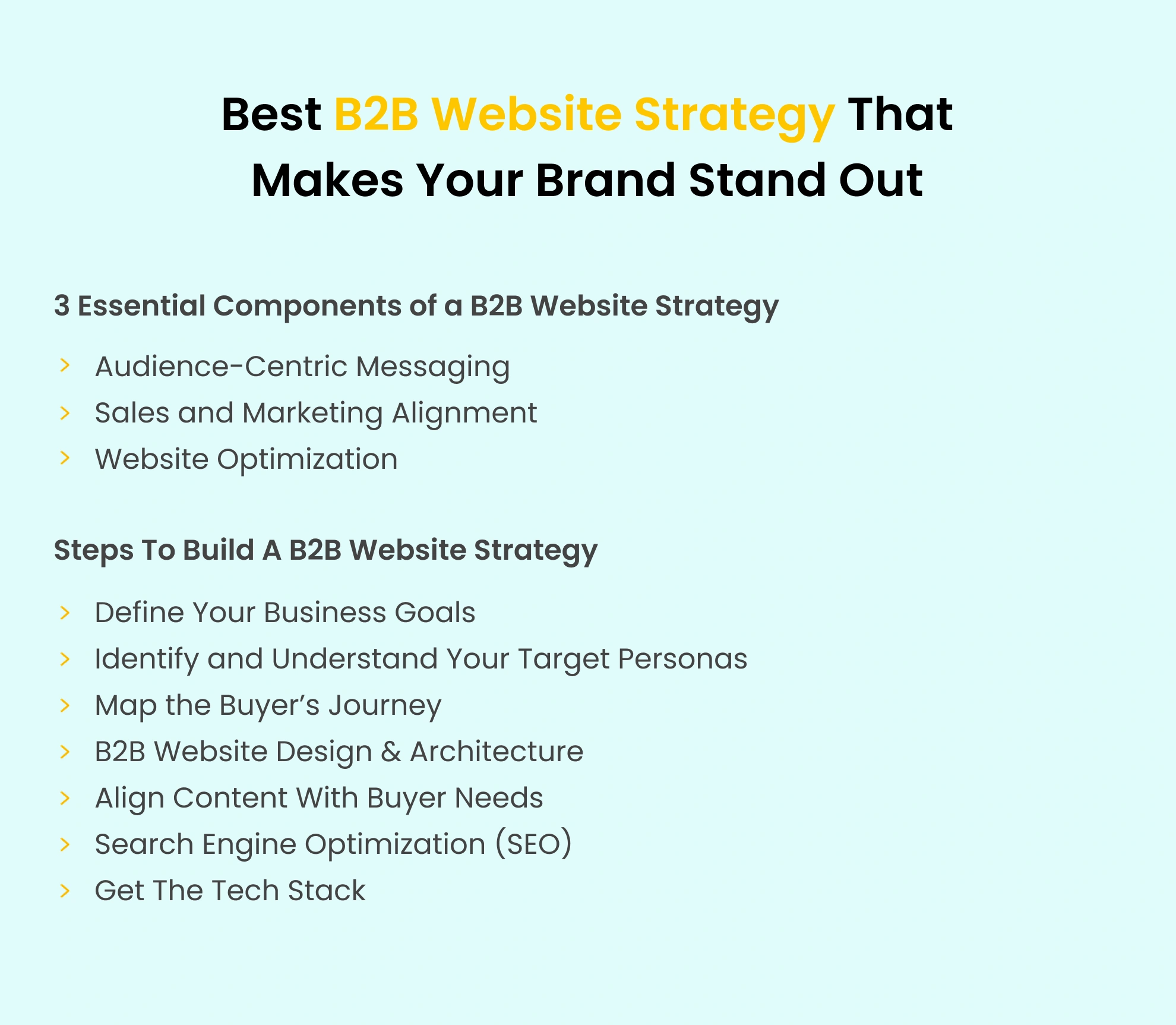
Related Articles:
Drive More Sales or Leads With Conversion Focused Websites and Landing Pages
Get Started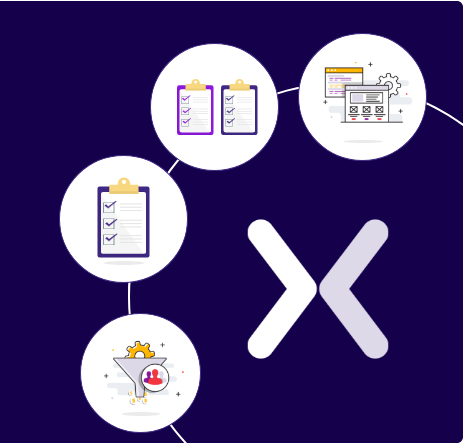
In today’s fast-paced digital world, having a responsive website is no longer just a nice-to-have, it’s essential. Whether...
As artificial intelligence continues to evolve, businesses are finding innovative ways to enhance their marketing efforts. One of...
Get quality posts covering insights into Conversion Rate Optimisation, Landing Pages and great design